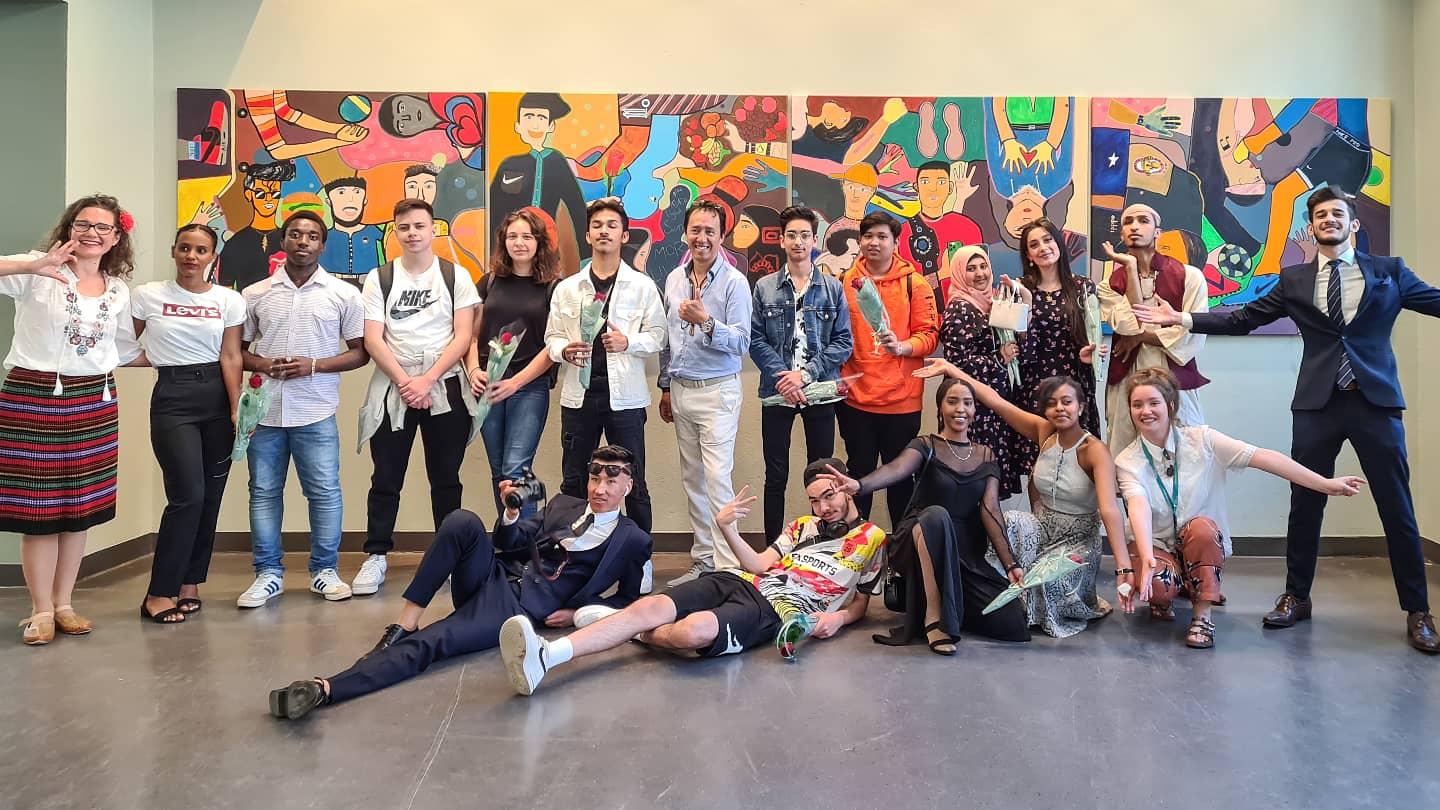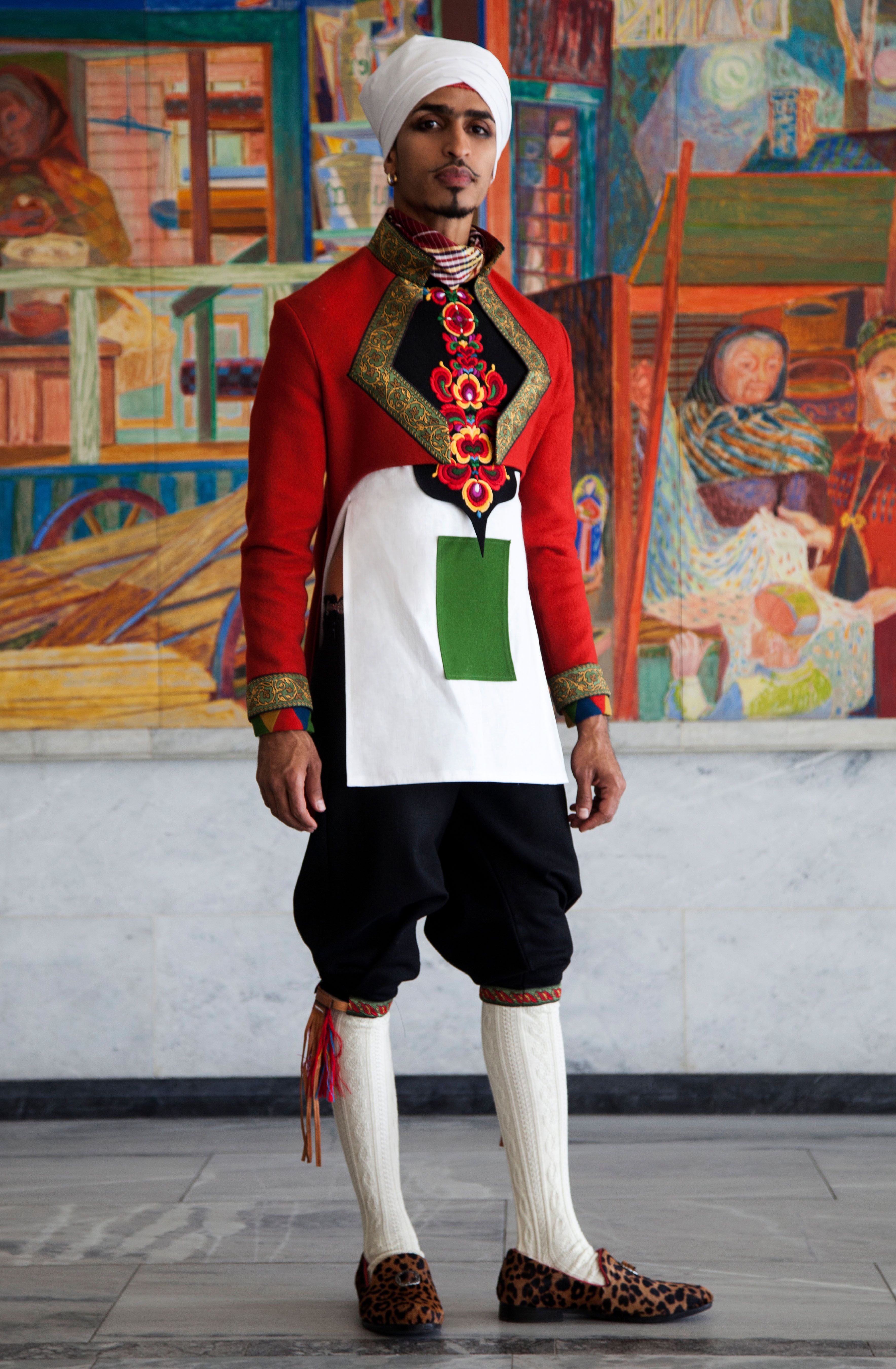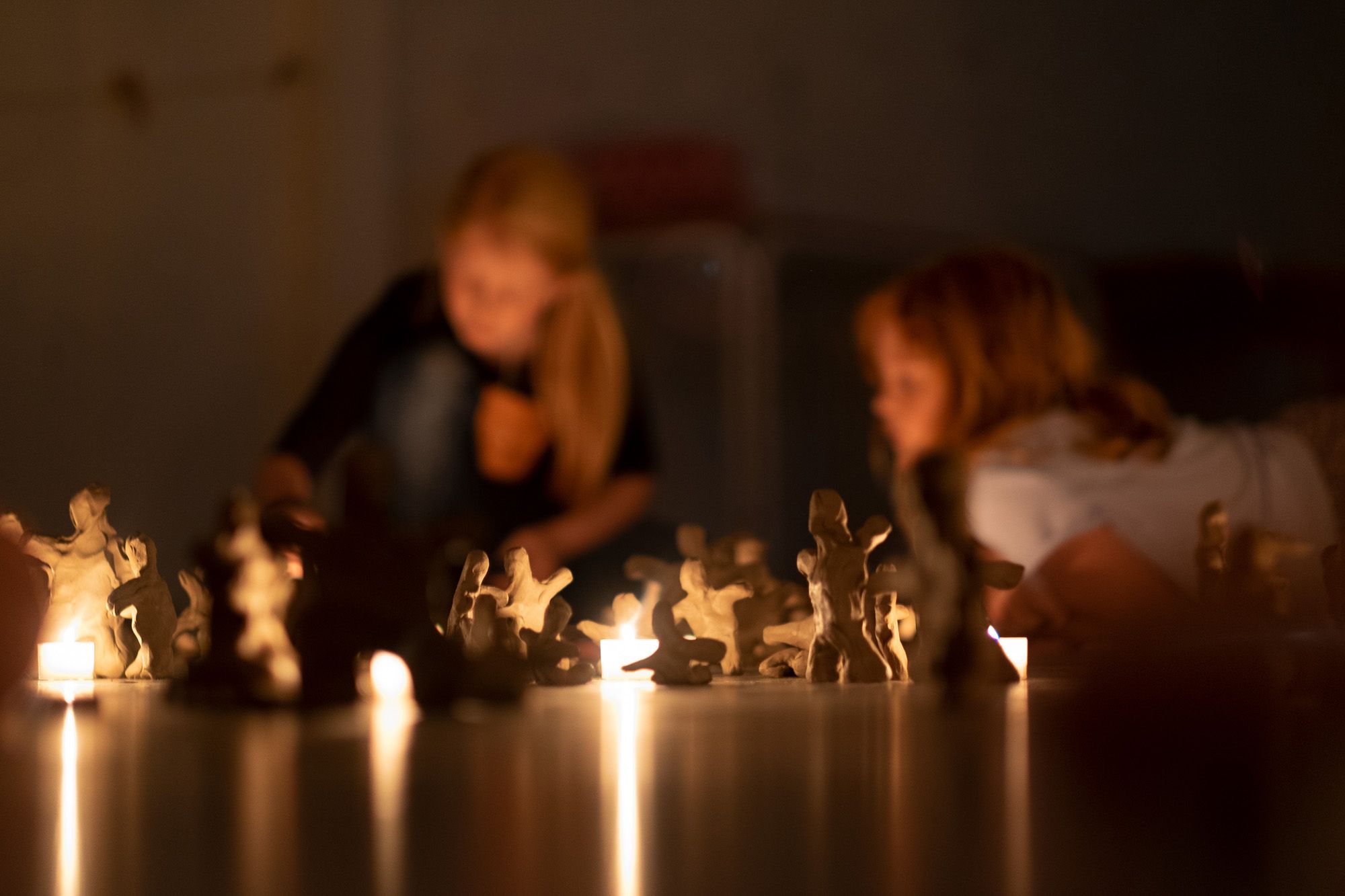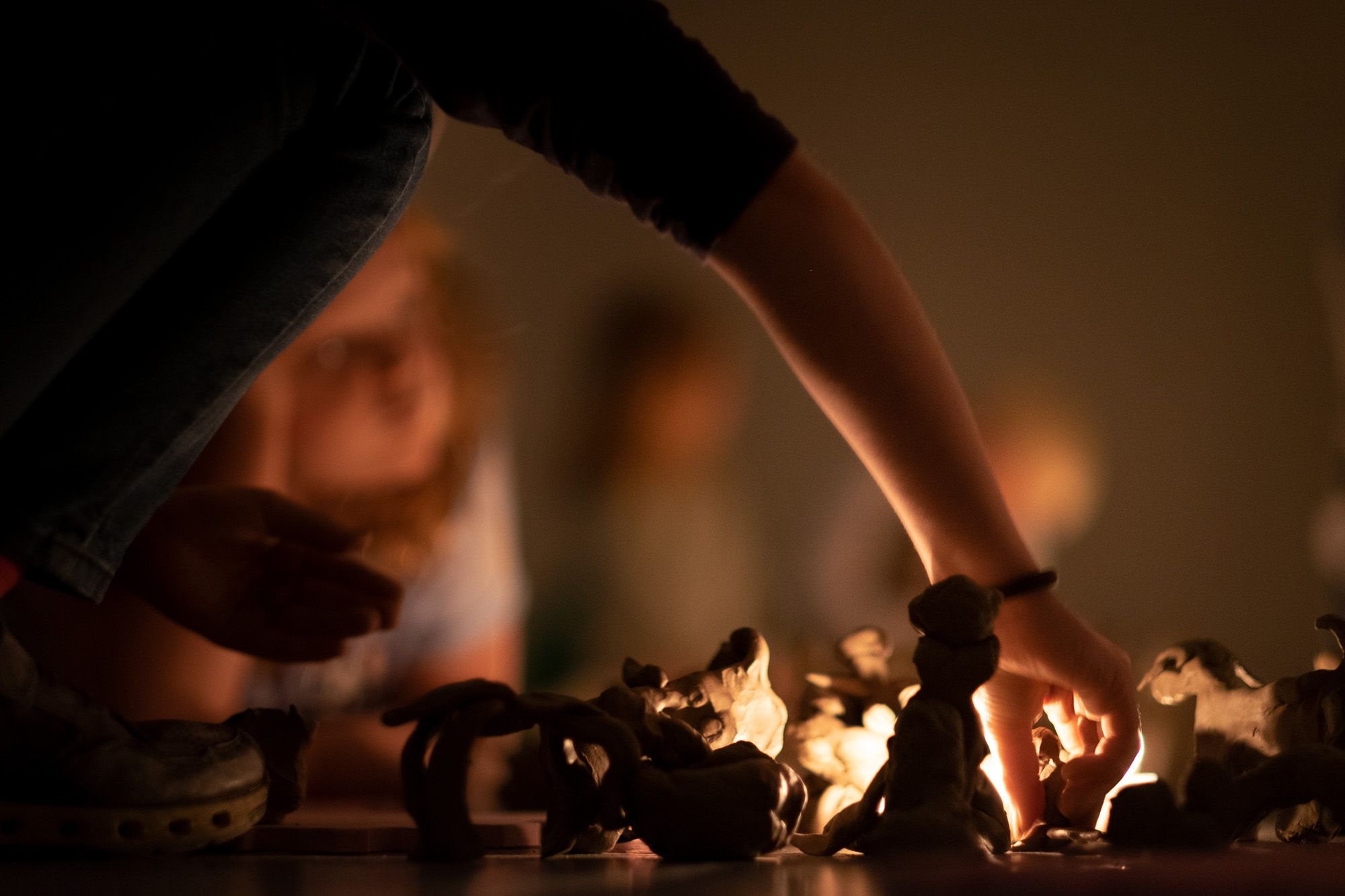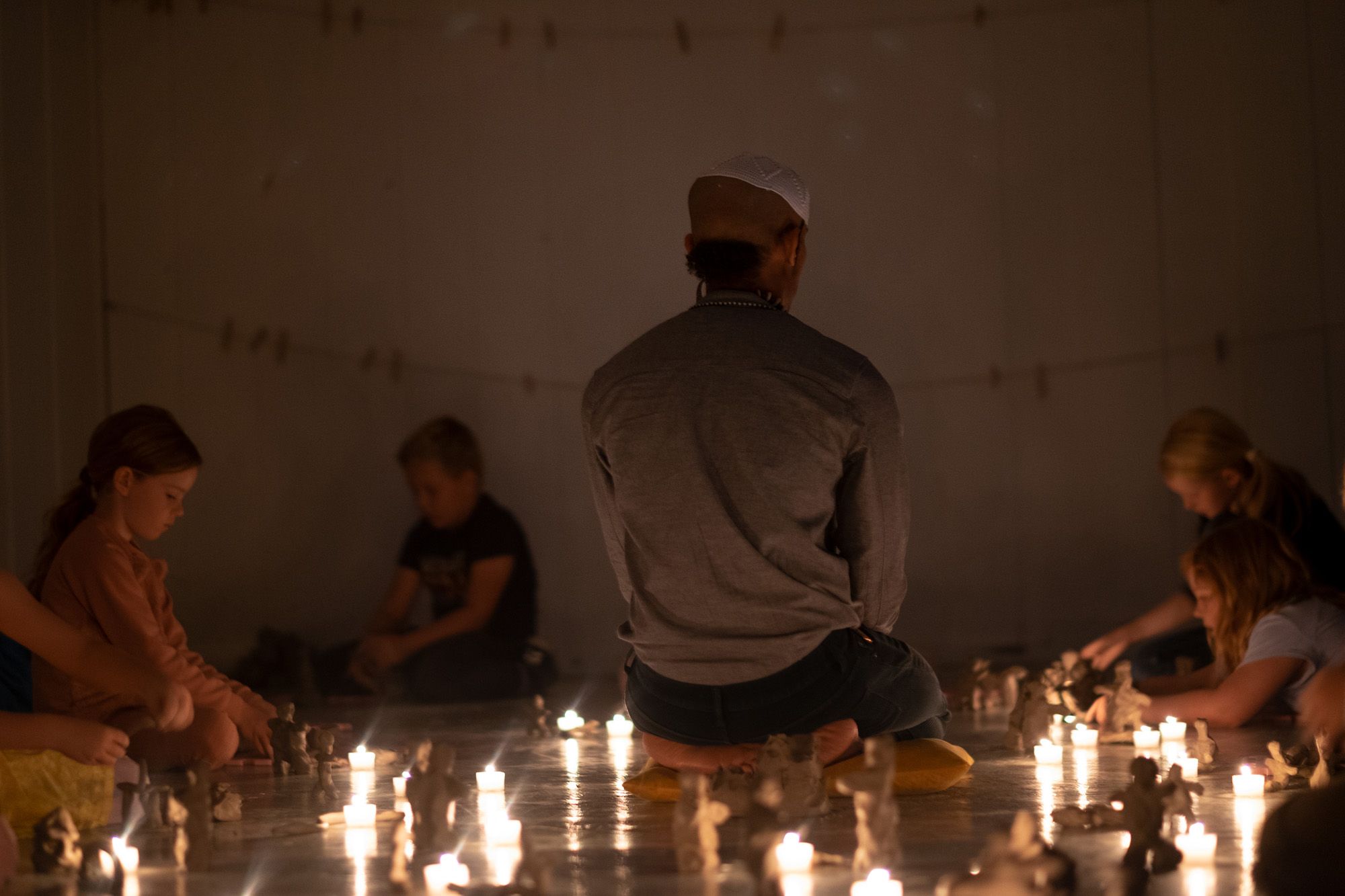See me from the inside!
In April-May of 2020, while the COVID-19 pandemic mercilessly dominated people’s lives around the globe, my own life and artistic inspiration were likewise affected. All planned exhibitions I had scheduled for the year were postponed to an unknown date or simply cancelled. Galleries shut their doors off and shortly after that, my creative flow followed in shutting down completely. The only creative assignment left in the air was a workshop with students at Hersleb secondary school in Oslo, which was realized with the efforts of courageous teachers and carefully-followed protective measures. I was invited to curate a workshop in which every student would be activated and encouraged to use an artistic method to express themselves. The workshop was titled “This is me from the inside/Dette er meg på innsiden.” The assignment was to work with students who have been living in Norway for less than three years. The students came from a variety of cultural backgrounds and different places around the world. What united us was the fact that we were all from immigrant backgrounds and the Norwegian language was a second or even third language for us.
Each of the students had a story to tell – a story worthy of being heard. My mission was to create a safe space for dialogue and trust, while at the same time, sharing an extra set of tools to assist in the expression of feelings and thoughts when spoken languages fall short. As an immigrant to Norway myself, I well understood the frustration of the spoken-language insufficiency. Talking about emotions and issues that are considered taboo in the culture the person comes from is an added burden. My pedagogical skills were modest, to say the least, since I had not previously worked directly with people in this age group, let alone with such varied backgrounds. What methodology should I follow to reach out effectively to every student – even those who had some preconceived judgment about the way I carry myself and live? How to turn the taunting laughter I overheard after our first meeting into friendship? The approach I took was to slowly build a trust-based relationship that could allow us to land on common ground despite our apparent differences.
I started the workshop with a presentation about different aspects of how I retell my stories through visual language. I categorized the presentation according to themes like dreams and ambitions, using art to advocate for rights, concepts around othering, bullying and my journey towards being comfortable with my own identity. Most of the students had not had a thorough education in art prior to the workshop. Therefore, I opened the door wide for them to pick whatever medium they were attracted to. This freedom came with two conditions; that each student create an individual project in which they were completely free, and to participate in a collective project that could be described as “a mural of memories.” This was a 6x1.2 meter large piece of canvas where everyone was encouraged to document themselves and their time at school through self-portraits or symbols of their interests and dreams.
The students’ final choices of techniques landed between photography, painting and music. Coordinating with the teachers of the two classes I facilitated, we made sure to have a one-on-one conversations with each student about what issues they would like to express, guaranteeing at the same time the respect and discretion for their individual decisions as well as offering any practical assistance needed to bring their ideas forward. The subjects the students chose were very bold and brave. A student photographically presented their personal experience with bullying and name-calling with a self-portrait proudly wearing all the words that had been used to bully them. Another student used painting to emotionally depict the obstacles and struggles they went through during the unsafe crossing of the Mediterranean to reach Norway. Their story spoke of travelling alone as a 16 year old, the destruction of their home, the journey by boat, establishing of a new hope and the pursuit of dreams in a new and foreign society. Other students touched upon important issues such as climate change, racism and familial relationships. They discussed issues that some of the students had not talked about before. The process of reaching a point where they could share these stories was would not have been possible without finding a common ground in the artistic process.
We then arranged an exhibition at the school’s cafeteria and classrooms on the students’ graduation day. The exhibition was a mixture of individual paintings, a large mural, photography and a musical performance made by students who sang in front an audience for the first time. The look of pride on their faces was impossible to ignore, and shown through in their speeches.
This three week long meeting was an insightful and very inspiring journey for both the students and for me. The students and I got the chance to see beyond our expectations of each other. We got to joke, play loud music, dance and experiment with acrylic paints and cameras. At the same time, we were able to lighten some of the psychological burdens by shifting their weight from the shoulders to be hung on a wall. We got vulnerable together, explored our similarities rather than focusing on our differences. I dare to say we got closer as a group. Their recent experiences and my similar past experiences helped us form a group that belonged to each other in some way – the kind of belonging I yearned for when I was their age.
I left this great experience with a sensation that a small torch of hope and trust in art and its ability to enhance our lives had been passed to these students. This torch must be kept lit, protected and invested in by our public institutions and educational programs.
Fact: The workshop experience potentially recruited a future artist, a teenager who ever since the workshop expressed him/herself creatively and is also writing poems – in Norwegian!


